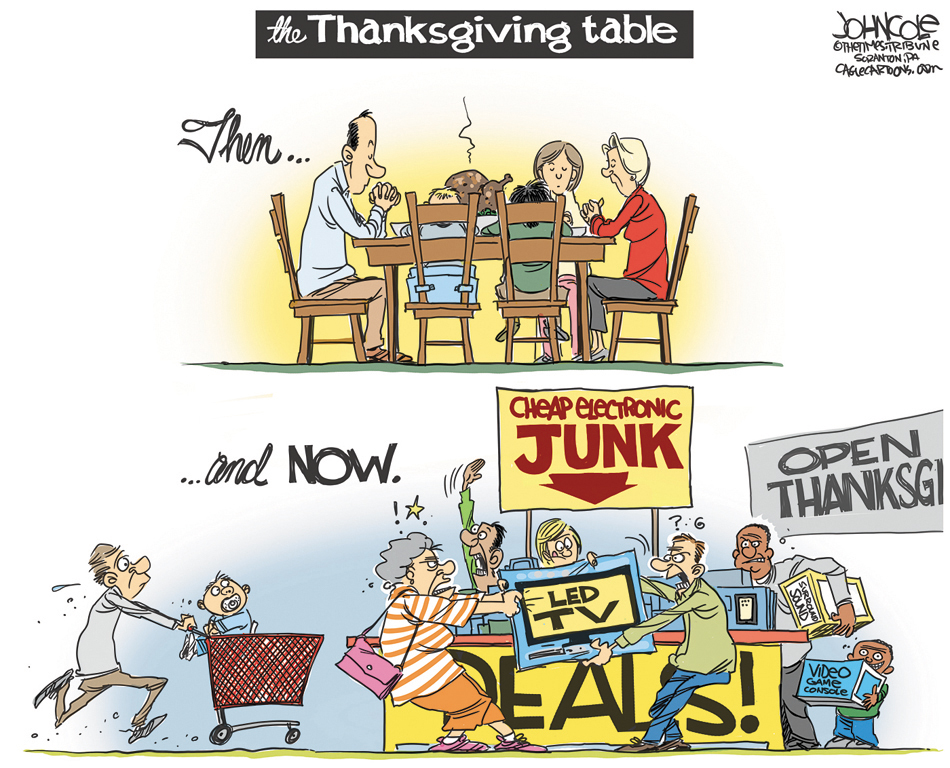Images and Pathos
Printed Pages 14-15You can appeal to pathos by using striking imagery in your writing, so it’s no surprise that visual images often serve the same purpose. A dramatic photograph, for example, may lend an emotional component that strengthens an argument. Advertisements often lure customers with provocative images. Most political cartoons also rely on visual images to carry the impact of an argument. For example, in “The Thanksgiving Table,” a cartoon that appeared in the Scranton (Pennsylvania) Times-Tribune after Thanksgiving in 2013, artist John Cole juxtaposes two contrasting images of “then” and “now” to make his point.
The first image is chock full of emotional associations. It depicts a family around the Thanksgiving table with the turkey ready to be carved, calling upon warm nostalgic feelings of togetherness, love, stability, and even home cooking. We see a mother and father, with younger people we assume are their children, the youngest still in a booster seat. They all sit quietly with heads bowed and hands folded, suggesting they are saying a prayer before their meal. Dressed modestly, they have eyes closed, to indicate a looking inward as they give thanks—for the meal, one another, or what they might consider blessings in their lives. No conversation seems necessary at this moment because they are gathered together in harmony. Even the yellow glow (a halo?) surrounding the scene suggests peace, warmth, and safety.
In stark contrast is “now,” with an image that screams chaos and conflict even before we notice the specific details. The yellow glow around the table in the first image gives way to a bright yellow sign with “JUNK” in all caps in a garish burgundy color. The expressions on the shoppers’ faces range from fear to anger to greed, all with eyes wide and crazed—a stark contrast to the peaceful closed eyes of the family in the top panel. There is frantic movement, such as the man pushing a cart with his baby in it, others clutching big boxes of would-be purchases, and two people fighting over an LED television set. The symbols above the characters heads—“!*”and “?@”—are familiar from cartoons as signs of harsh language. The “Open Thanksgi-” sign reminds us that this is what the people depicted are doing instead of sitting with family and friends around a traditional Thanksgiving table.

Is the first image a true depiction of Thanksgiving dinner when, we all know, various conflicts may surface and all is not necessarily perfect? Perhaps not, but it is the ideal of how many of us would like to think life was “then.” And, regardless of whether it reflects everyone’s reality, the cartoonist makes his case that the peace and togetherness of the first image is preferable to the frantic materialism of the second. He engages our emotions by setting two very different scenes, juxtaposing them, and using color and font to make the argument that desperate material strivings threaten traditional family values.